How to scarify a lawn: simple steps to give your grass a boost
Our guide explains all you need to know on how to scarify a lawn. There's nothing remotely scary about it – we promise
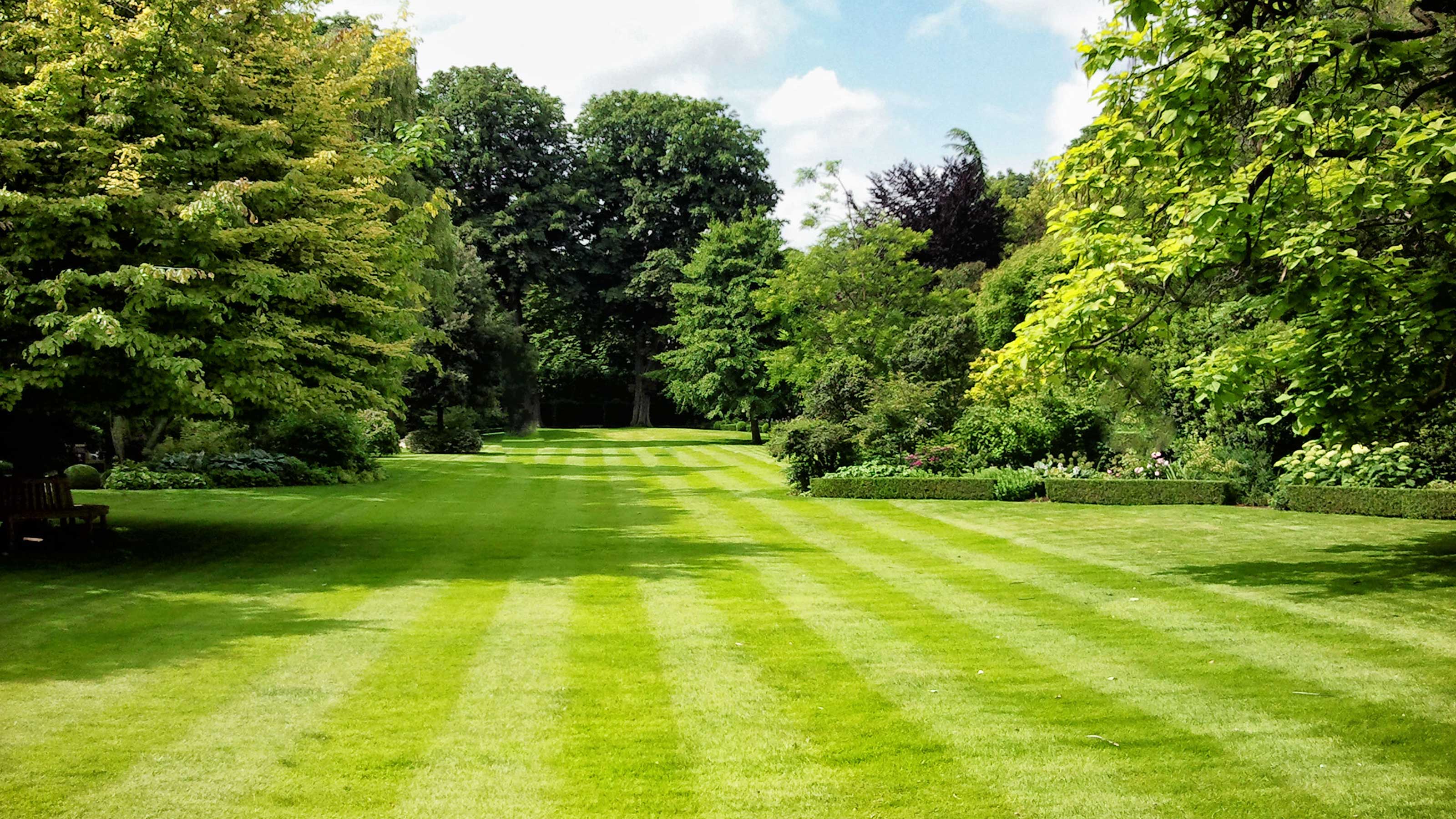

Is the grass in your garden looking patchy or mossy? You need to learn how to scarify a lawn. But what exactly is scarifying, and how does it turn a lacklustre patch into lush green grass? We're here to explain.
Not even the smartest of lawn edging ideas can save the day if the turf itself is looking shabby. But, with a little scarification, you'll soon have it looking tip-top again. The process is really quite simple. It's all about getting rid of the brown, dead-looking material at the base of the grass, otherwise known as thatch, by using a rake or a scarifying machine. The other thing scarifying does is help remove moss – another impediment to having a bowling-green-standard lawn.
To help you get started, we've rounded up plenty of top tips on how to scarify a lawn. With our advice, you'll have that beautiful stretch of green back in no time.
Practical tips on how to scarify a lawn to get your garden looking gorgeous again
It's super simple to scarify a lawn – our advice explains all so you can ensure your lawn is in great shape.
What are the main benefits to scarifying a lawn?
Over time, the base of a lawn becomes congested with thatch and moss. 'Scarifying is a process that removes this "undergrowth" from lawns which, if left, can prevent water and fertilizers from reaching the roots and soil,' explains the team at Cobra.
Thatch also inhibits airflow around the grass. And moss, if left to flourish, will take hold entirely, making your lawn more moss than grass – a problem that's difficult to rectify.
So, aim to keep thatch levels below 1cm (3/8in) deep, as advises the RHS – any greater and water and fertilizer will have difficulty getting down to the grass' roots. However, bear in mind that a small amount of thatch is a good thing, and scarifying too deeply can damage your turf, so it's important to keep the balance right.
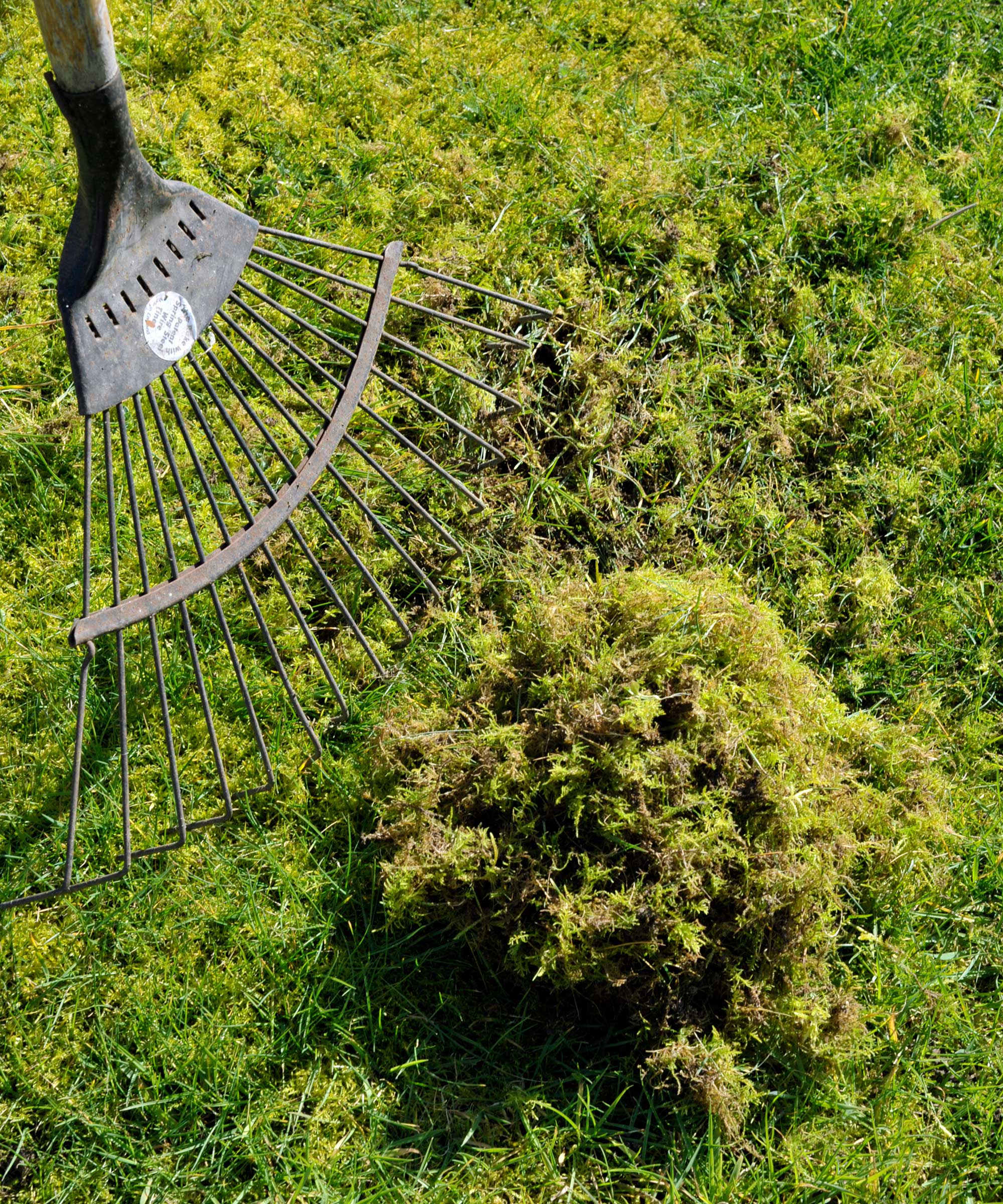
How often should you scarify a lawn?
If you've recently learnt how to plant grass seed and have given it a go in your yard, it's important to leave it to establish before you try to scarify it. This goes for newly-laid turf too: wait at least a year.
After this, established lawns should ideally be scarified once a year, or at least once every couple of years so that you can keep on top of the problem and ensure your carefully planned lawn ideas are always looking their best.
What time of year is best to scarify a lawn?
Strictly speaking, spring is the best time to scarify. However, there is a danger that you will have to endure beautiful summer weather with a lawn that's not looking its best and is still growing back.
For practical reasons then, it's often best to scarify in early fall (typically September or October in the US or UK). Just be sure to go gently and work well ahead of any frosts. There are lots more autumn lawn care tips in our guide.
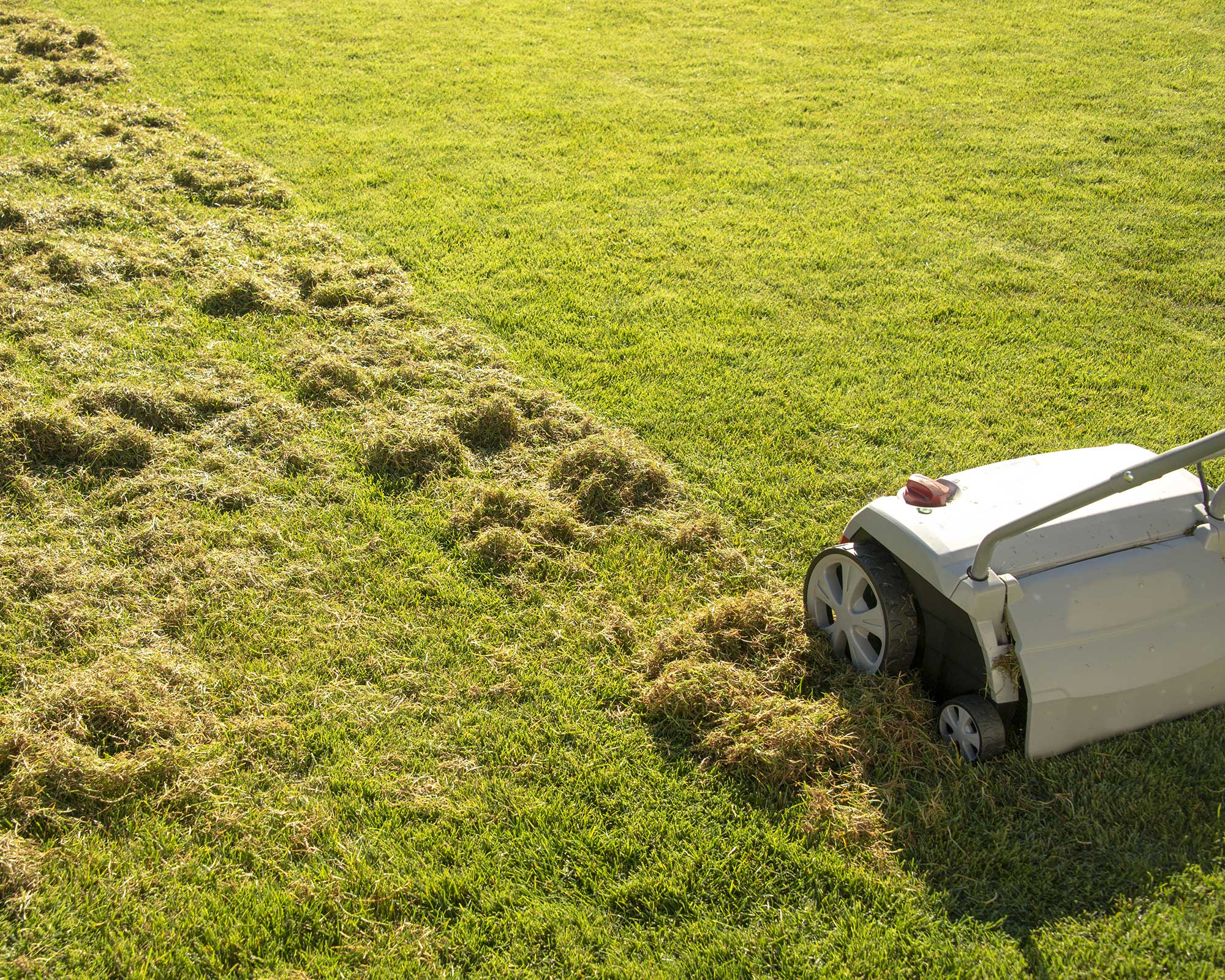
How to scarify a lawn using a rake in three simple steps
Scarifying by hand is simple when you know how – just follow these three steps:
- A few weeks before you intend to scarify, you should treat your lawn with moss killer so that you don't spread moss spores with your rake.
- Start by mowing the lawn with the mower set low – about 2cm (0.8in) – and attach a grass box on the mower to collect the clippings.
- Use a spring tine rake to scarify the lawn. Start gently and be careful not to be too brutal. Be sure to leave some thatch – a small amount helps to protect the plant.
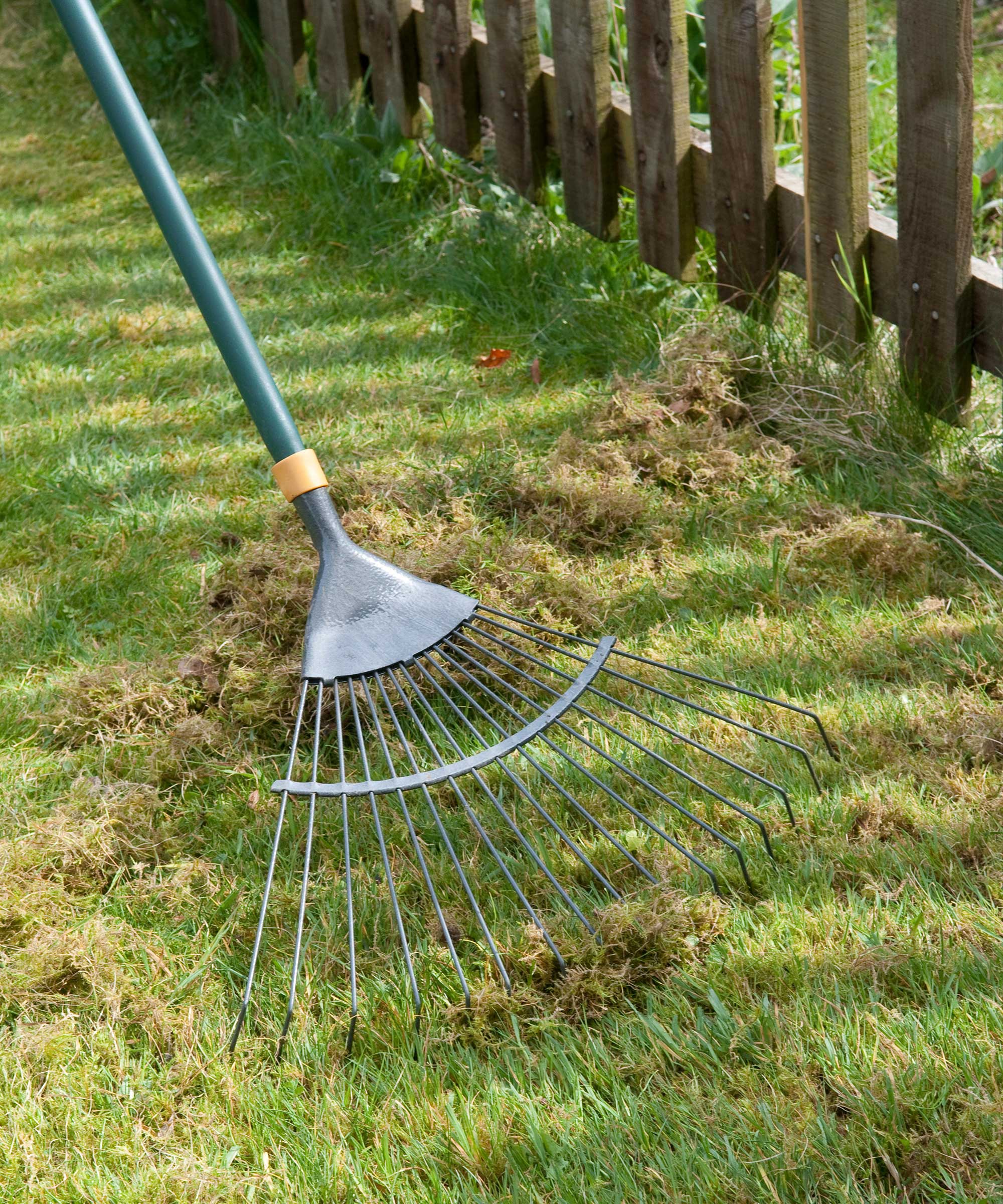
How to scarify a lawn using machinery
'If done by hand, scarifying can be a backbreaking process, particularly if you have a large lawn or if it is particularly affected by moss and thatch,' says Cobra. 'In these circumstances, a scarifier would be a much better choice of tool than a rake.'
There are several options, from simple wheeled ones available for less than £50 (around $68), right up to petrol-driven models, which at £350 (around $475) upwards, are much more of an investment.
Still, bear in mind that if you have the right tools it's far easier to do a good job, and you'll be more likely to make lawn care a regular thing.
The approach is more-or-less the same, no matter what tool you're using:
- Prepare the lawn as above.
- When it comes to scarifying, work your way over the lawn in one direction to lift around a centimeter or so of loose thatch, using a garden rake or a leaf blower to remove the debris.
- Then, change directions, working at right angles to your first pass. The thatch will be looser on this second attempt and you can lower the machine blades slightly.
- In autumn, two passes are enough. In spring you can do three or four passes, particularly if the lawn is in a really bad state.
Looking for more spring lawn care tips? Our guide has you covered.
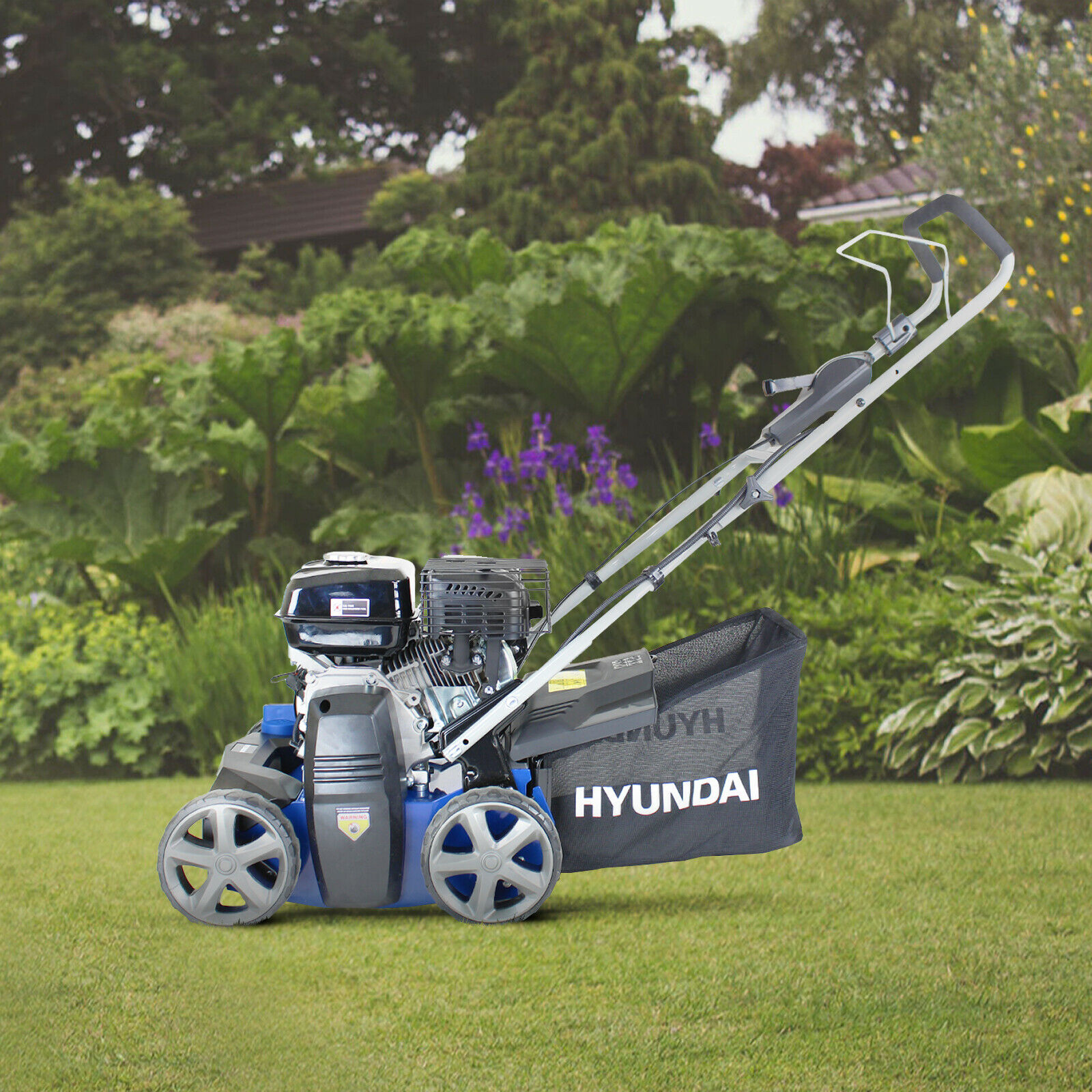
Which is the best scarifier or lawn rake to use?
When you come to choose between a lawn rake, push scarifier and scarifying machine, it will largely come down to how much space and budget you have. If you are on the lookout for cheap garden ideas and only have a small lawn, a lawn rake will do the job perfectly well – it just demands more work on your part.
You can find a selection of affordable lawn rakes below.
If you want to make a really easy job of scarifying your lawn, we recommend opting for a lawn scarifying machine. Simple push scarifiers are cheaper than petrol or electric machines, which are basically the same size and price point as lawn mowers.
The push versions are great for small to medium lawns and you probably only need to invest in a powered scarifier if you have a lot of lawn to cover or want to make the job faster and less effort. Just make sure you have the space to store this as well as your mower – our shed ideas feature has plenty of inspiration.

What should you do after scarifying your lawn?
'You may have also noticed that your lawn is suffering from compaction, with the ground feeling very hard and rainwater running off it easily,' says Cobra. This is not uncommon after a long, hot summer.
'Aerating your lawn will allow better movement of air and water throughout the soil, creating a healthier root system so that it will manage better in periods of drought or waterlogging,' they continue.
Aeration can be done after scarifying. You can use a simple garden fork to do this by pushing it into the ground and gently wiggling it back and forth, working your way up and down your garden. Alternatively, you can invest in a tool – there are some which can both scarify and aerate which are especially convenient. You can find plenty of expert guidance on how to aerate a lawn in our dedicated feature.
'Once you’ve scarified and aerated, you may notice that your lawn looks worse than it did before you started,' says Cobra. 'Don't worry, this is totally normal!' For that reason, it's a good idea to add a fertilizer to your lawn after scarifying and aerating to boost its growth and aid recovery. Use a specific lawn food for the time of year, and follow manufacturer’s instructions carefully. 'After several weeks of strong growth the look of your lawn will improve and it will, in time, be much healthier than before,' adds Cobra.
'To help with recovery it may be necessary to overseed, particularly where there are bare patches,' Cobra continues. This is easy to do and will improve the appearance of your lawn – our guide on how to repair lawn patches with seed has everything you need to know.
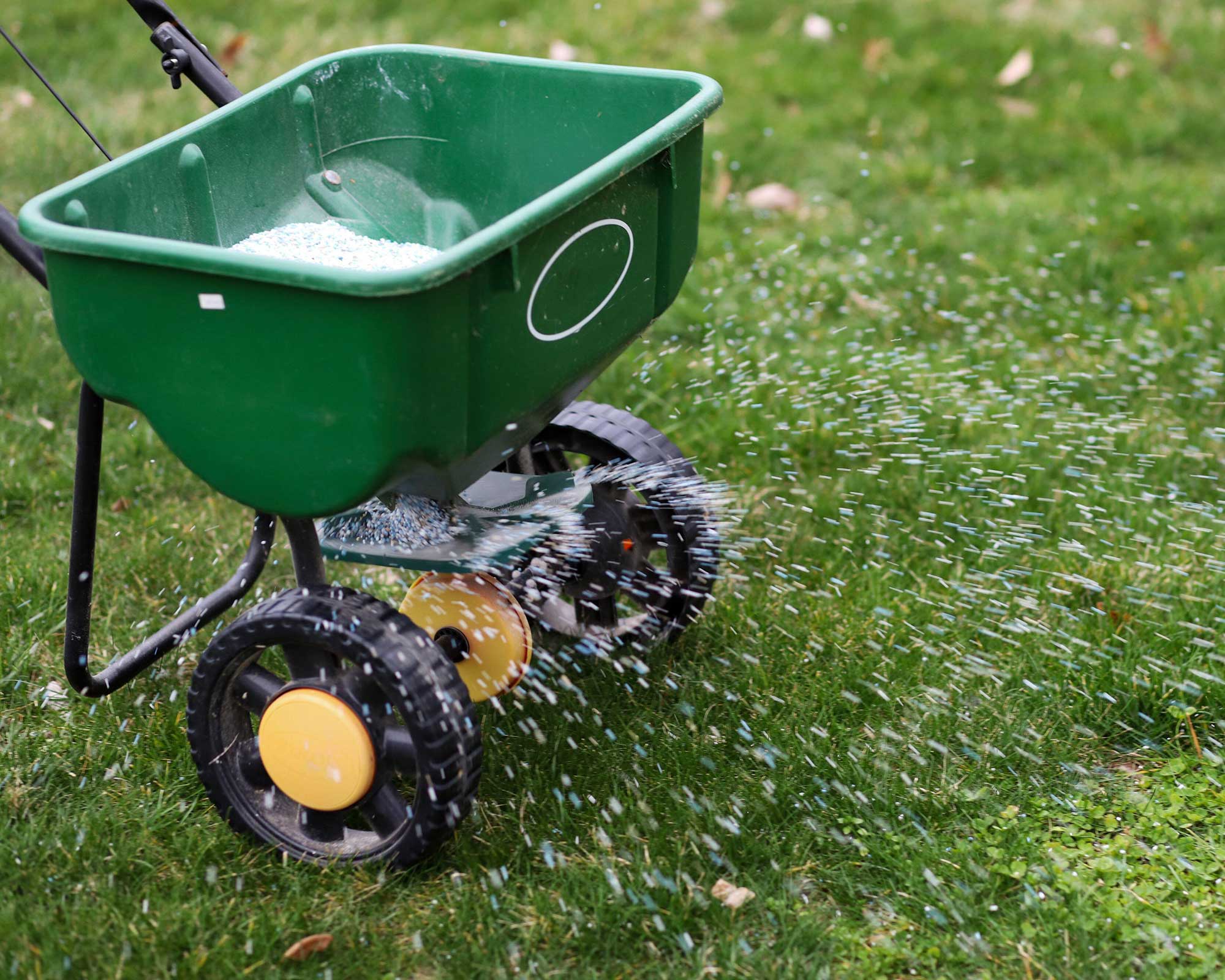
When should you mow your lawn after scarifying?
Regular mowing will encourage strong regrowth, and a flat, healthy lawn. However, after scarifying, you'll want to give the turf time to recover. According to the UK Lawn Care Association, it's best to wait until the regrowth has reached about 60mm (around 2.5in) in height before you start mowing again.
Keep the blades relatively high to start with, and as always, avoid mowing in wet or frosty weather, or straight after rain. You can find out how to mow a lawn in our guide, whilst our buying guide to the best lawn mower will come in handy if you need an update.
After a brief foray into music journalism, fashion and beauty, Karen found herself right at home working on interior magazines with her role on Ideal Home magazine. She is now Homes Editor on Period Living magazine and loves the opportunity the job gives her to write about beautiful properties and gardens. She finds it inspiring to talk to people about their homes and gardens, and always comes away from interviews feeling inspired to try things in her own home.

